
The 1958 Cadillac Sixty Special. The top of the line Cadillac, from a year when even the standard Series 62 coupes and sedans were something to see. But the Sixty Special, now that was something to behold! Fins, chrome, sheer unvarnished size and comfort! It was the Cadillac of Cadillacs.
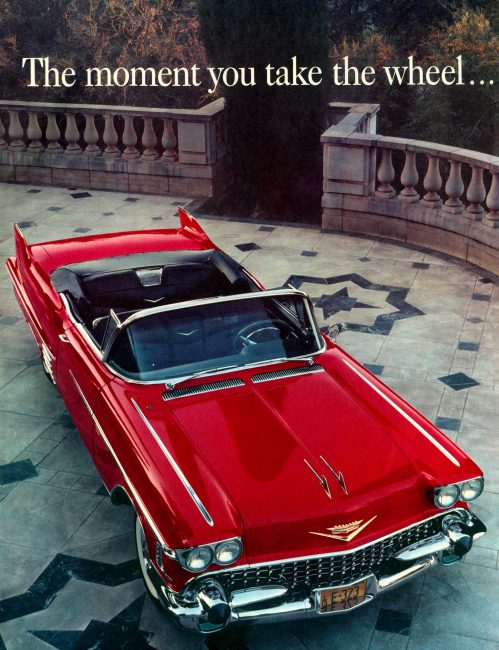
“The moment you take the wheel…you will find a wonderful new world of motor car performance! When you turn the ignition key and that great, powerful Cadillac engine comes to life-you will sense instantly that something very special awaits you in the miles ahead.”
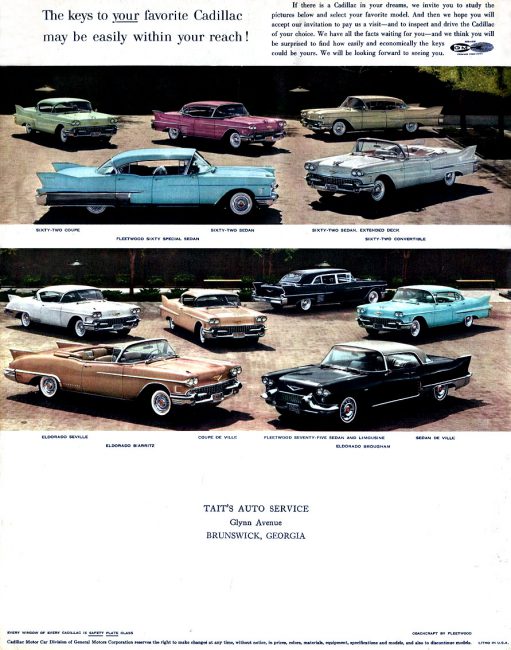
“And you will travel with such incredible smoothness and solidity that there will be only the passing scenery and the onrushing highway to give you a sense of movement…within the first few miles you will know that this is, beyond question, automotive performance at its masterful best!”
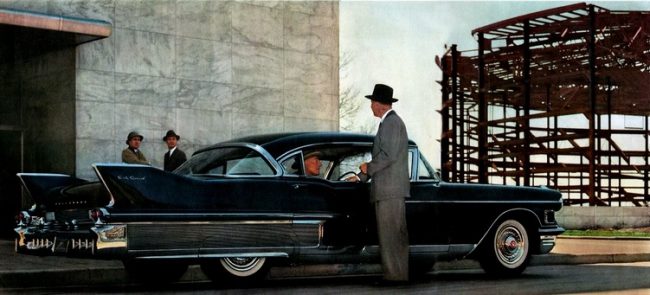
So said the 1958 Cadillac sales brochure. Yes, in the late 1950s Cadillac was king. It had it all. Looks, quality, luxury, performance, prestige. And, of course, chrome.
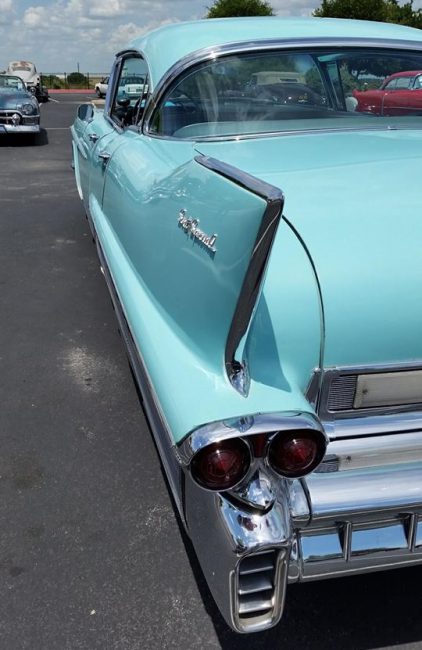
Sheer, wild, unapologetic chrome! GM could do no wrong in the 50s, and it showed in their unabashedly flamboyant motor cars. And most of all at Cadillac, where the Clark Street factory rapidly sent truckloads of befinned pastel-toned confections, such as this turquoise Sixty Special, to happy, affluent new owners.
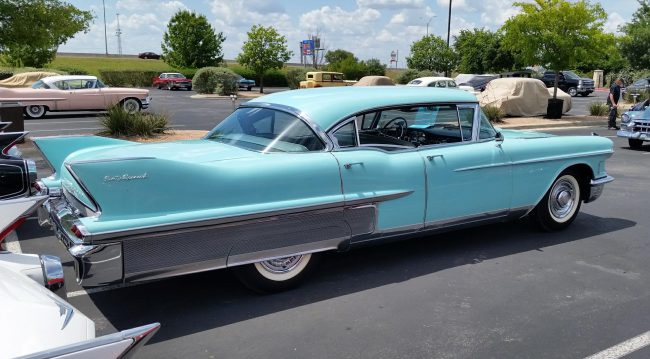
While it was not the most expensive Cadillac this year (both the Fleetwood Seventy-Five limousine and stratospherically-priced Eldorado Brougham were more), the Sixty Special was traditionally the nicest owner-driven Cadillac, with the most chrome, and longest wheelbase.
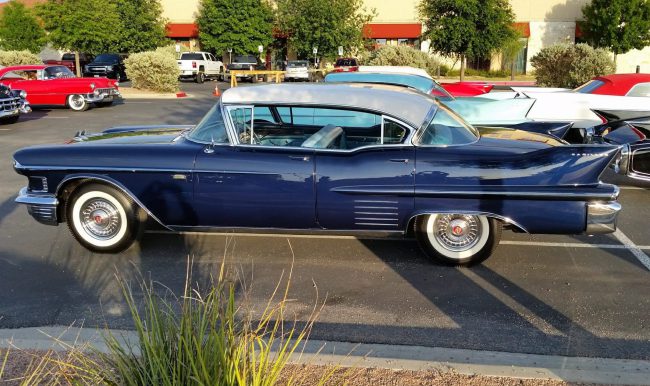
1958 Series 62 four-door hardtop
Compare, for instance, the regalness of the Sixty Special to this more mainstream yet no less compelling Series 62. Both are beautiful cars, but the Sixty Special is clearly more upscale, with a longer wheelbase, fender skirts, more mature styling, and at least twelve square feet of additional chrome!
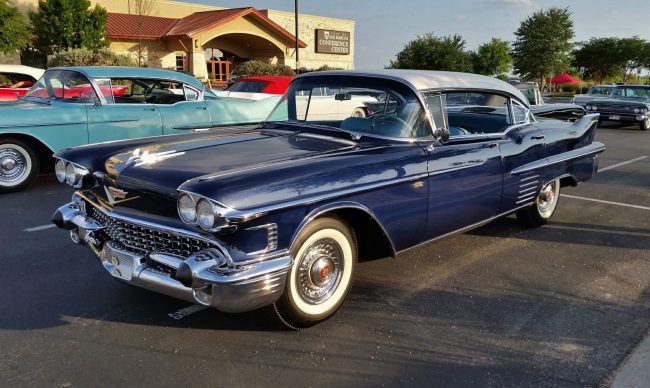
Base price of a 1958 Series 62 sedan was $4,891. 13,335 were built. And many very likely went out the door for well over $5,000, with all of the Cadillac factory options that were available-and happily ordered by their well-do-do owners.
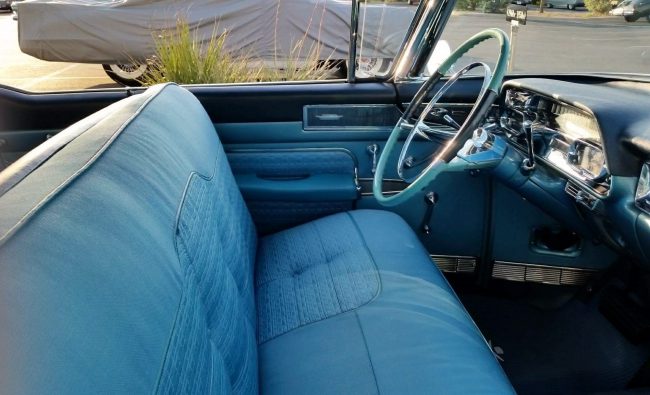
Yes, it was the ‘standard’ Cadillac, but this was America in the 1950s and this was General Motors. As Broughamtastic as the Sixty Special Fleetwood was, one could be more than happy with a Series 62.
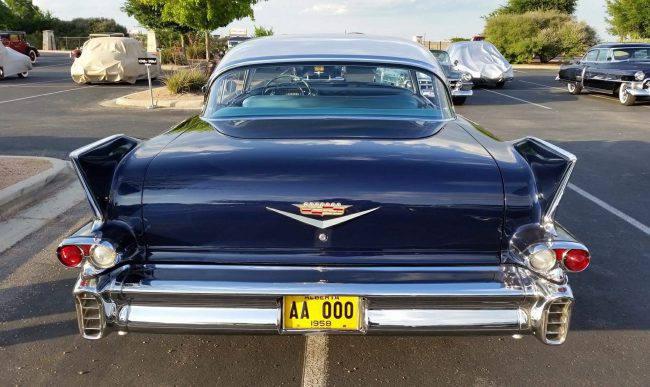
It had all the style, all the room, all the comfort, just with a little less gingerbread. And a more modest retail price (please don’t call it the cheap model!).
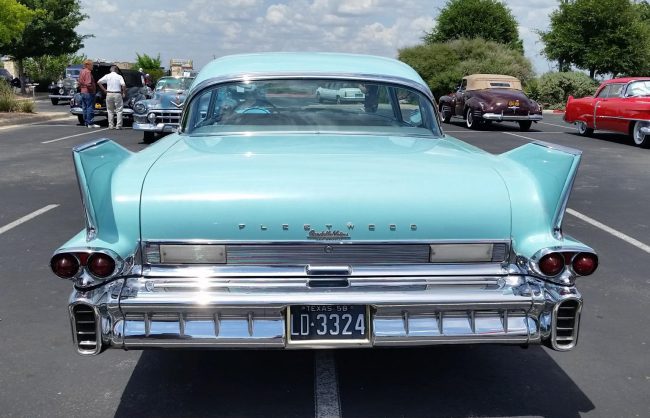
Yes, the 1958 Series 62 was a fine car, no doubt about it. And yet…and yet the Sixty Special was even better! More cash out the door perhaps, but owning a Cadillac was all about splurging anyway!
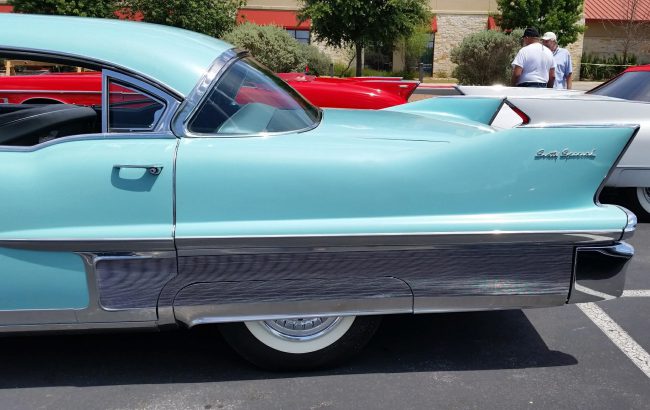
Available only as a four-door hardtop the defining feature was the broad, ribbed stainless steel trim along the luxury yacht’s flanks, with matching fender skirts.
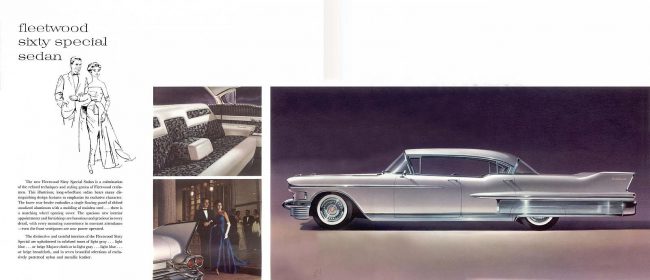
“The spacious new interior appointments and furnishings are luxurious and gracious in every detail, with every motoring convenience in constant attendance-even the front ventipanes are now power-operated.”

“The distinctive and tasteful interiors of the Fleetwood Sixty Special are upholstered in subdued tones of light gray…light blue…or beige Mojave cloth or in light gray…light blue…or beige broadcloth…”
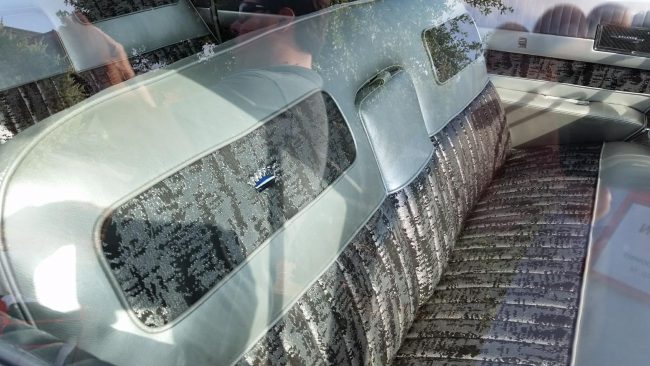
“…and in seven beautiful selections of exclusively patterned nylon and metallic leather.” This, from the prestige brochure issued to Cadillac dealers that year. Yes, with the top of the line Cadillac, you most certainly had the luxury of choice!
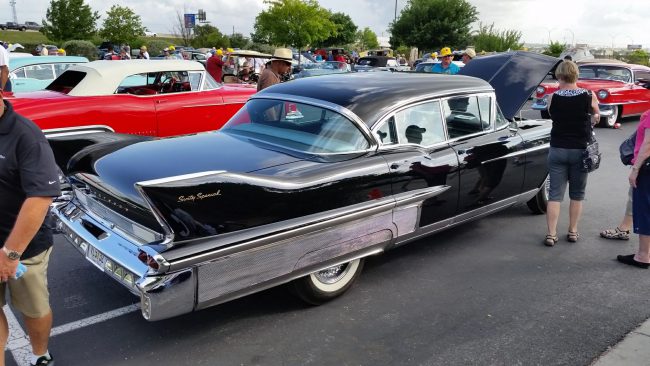
The 1958 Sixty Special Fleetwood had a base price of $6,232, or over $1300 more than the Series 62 four-door hardtop. No small amount in the late ’50s. To put it in context, add a zero to the MSRPs and you’ll get a better idea of the divide price-wise.
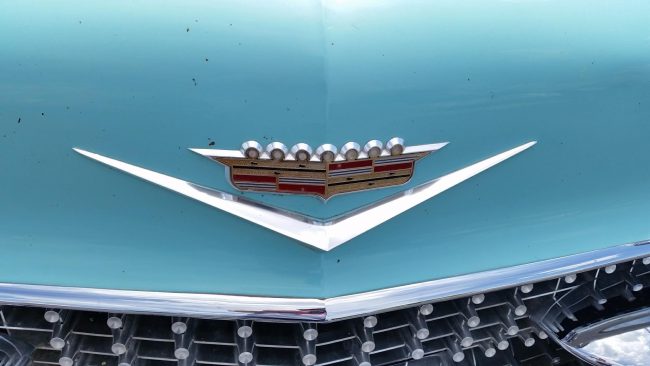
The Sixty Special had a curb weight of 4,930 pounds, and 12,900 were built for the year. All, like every single other Cadillac offered that year, was powered by a V8. Said engine was an OHV, 365 CID unit with 310 horsepower at 4800 rpm. It was topped by a Carter Model 2862S four-barrel carburetor.
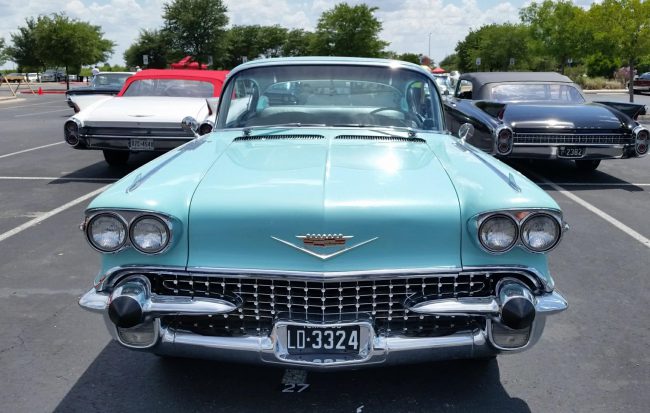
But wait! There’s even more! The Eldorado engine, which featured triple two-barrel carburetors and 335 hp, was also available as a factory option! Other fine Cadillac accessories available included six-way power seat ($103), Sabre spoked alloy wheels (set of five, including the spare, $350), air conditioning ($474), power door locks ($35 on coupes; $57on sedans) and EZ-Eye tinted glass ($46).
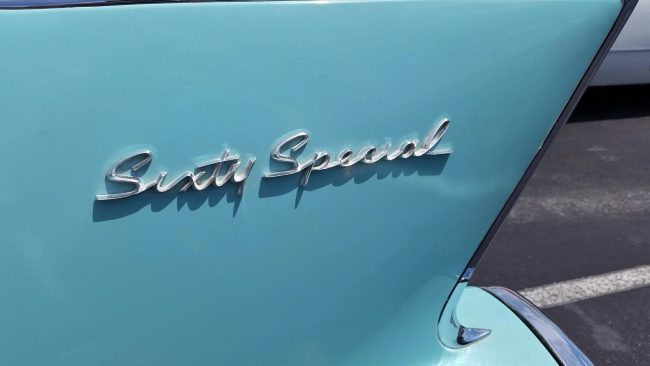
1958 was the final year Harley Earl, GM’s Styling VP, was fully in charge. Though he was nominally responsible for all GM cars, of course Cadillac was his baby.
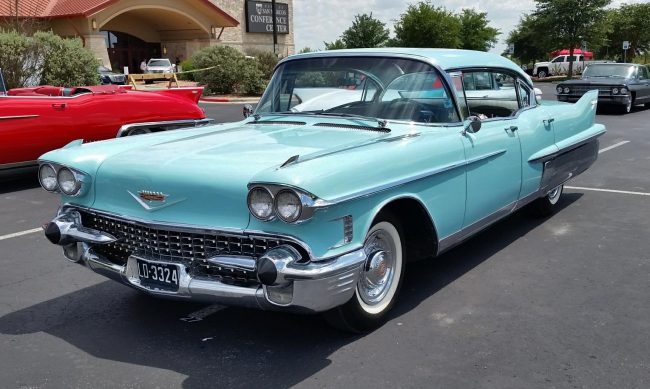
1958 General Motors cars took a lot of flak at the time for being overdone, overly chromed, and just way too busy in general aesthetically.
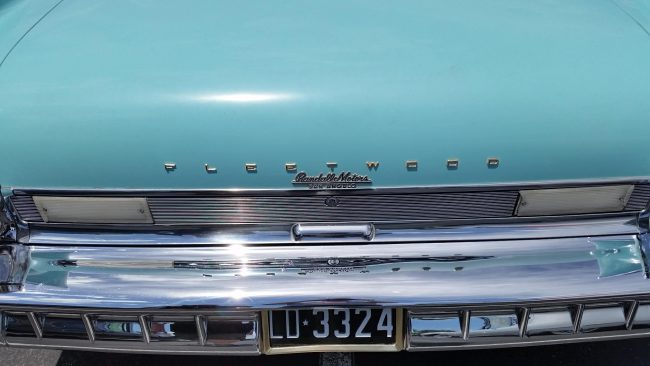
While I can see their point of view, I still really love the 1958 General Motors cars. And Cadillacs were still glorious, if perhaps a bit too chromey. But it was a Cadillac, dammit! They were supposed to be over the top!
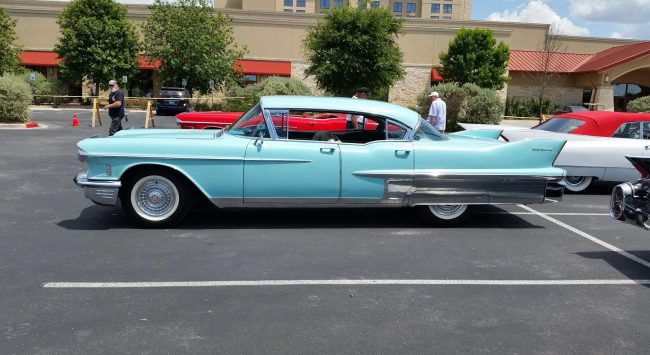
When you got to the point in your life that you could own a Cadillac, it meant a lot. It meant you made it, you were a success, you could ease back a tad if you wanted to and enjoy life. Whether that meant you were a successful CPA, a retired attorney, or a hard-boiled Texas oilman was immaterial. You were a Cadillac Man. You’d made it. So enjoy it. And for many in 1958, it was their year. What could be better than a new Sixty Special in your driveway?

Note: All of these pictures, with the exception of the vintage brochure pictures, were taken by my friend Jayson Coombes at the Cadillac LaSalle Club grand national meet held in San Marcos, Texas on June 8th through the 10th. Being in Illinois, there was no way I was going to make the trip.
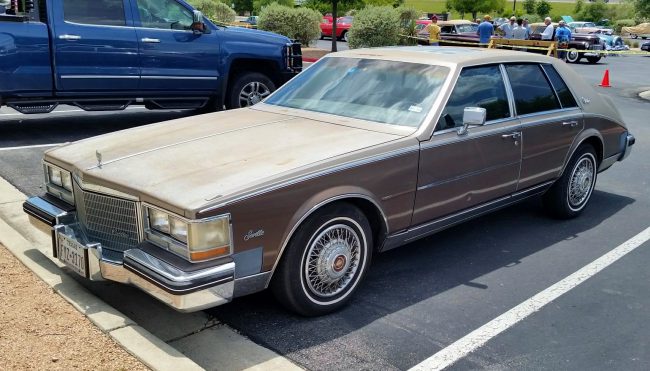
But Jayson, being a Texas resident and owner of a 1984 Cadillac Seville Elegante, made the trip. And his HT4100 Seville made the 1,085-mile trip with nary an issue, with the frosty automatic climate control blowing strong the whole way! I’d like to personally thank him for sending all these great pictures! And this is not the end of it. There is a chance I will be crashing the RG site with vintage Cadillac pixels in the weeks ahead! So stay tuned! -TK







11 Comments
I love the shot of the professional men around the 60 Special and that mid century architecture. I doubt any of them are suggesting switching to Mercedes. Even though it gets by on only 3 liters and you only have to give up a few creature comforts. Who needs those in a luxury car, and besides Mercedes is even going to add tailfins. What value!
What a glorious combo of style and color.
Amazing cars, the chrome must have been applied with a trowel .
-Nate
Supposed to be over-the-top? Not in its time – those were supposed to epitomize taste and refinement. Now it’s always tough to judge the taste and mores of another era through our own prism…but one can try.
And perhaps it explains why the VW Beetle, and the Rambler…anticars, both of them, in their time…why they grew in popularity, and especially with the intelligentsia. Salesmen and other less-cerebral successful types would be attracted by a bright badge of their success; but an introspective person, no matter his income, would balk at the premises and the execution. Example: Charging more, for eight more inches, or whatever, just added to the car behind the rear window? That increases its value? In what realm? Is this a high-school-locker-room male-member-measuring contest, projected onto one’s personal chariot?
Cadillacs were relatively well-engineered, for the time, in their day. Relatively. We can forgive the carburetor, of course; FI was not developed enough to consider. But…let’s take something as mundane as the windshield wipers. Really…that big gap between the two wipers? Years later, little MG, attacked the problem of a windshield relatively long to its height, with three wipers. Yet the Cadillac Division scarcely gave the tiny, peephole wipers a thought.
Likewise, the rear mirror. I had bought better rear-vision accessories out of Nationwise Auto Parts for my PINTO, fer chrissakes.
It goes without saying, all those flowing French curves, and those tailwind-correcting fins, were rust traps. Of course, when a product is sold for STYLE, and style is deliberately nudged in different directions in the name of Planned Obsolescence…the duration of the product doesn’t MATTER. Transportation is only an incidental function of such a product.
Although I’m a Golden-Ager by nature, there are some ways in which I have to say we’ve made true progress. And much as I decry government regulatory fiats, we really do have better products for sale in the auto market today.
That’s an incredible amount of space beyond the rear axle. “I drive a Cadillac because I’m the sort of person who travels with a lot of luggage.”
You sir, … are a Bum! (with Jackie Gleason inflection)
This car represents the problem that Detroit has always had, how to differentiate cheaper cars from expensive cars. Notice that the doors and passenger compartment are the same size on the 62 and 60, so the expensive model doesn’t offer any more room for passengers. They also have the same engines, the same chassis, same brakes, mostly same interior, and thus the primary differentiating features are unneeded increases in vehicle length, and some extra chrome and dressing, which cost virtually nothing extra to manufacture and hence are pure profit. Chevrolet offered fuel injection from 1957 to 1965, why didn’t Cadillac make it standard on top models instead of extra chrome? The Corvair has 4 wheel independent suspension in 1960, why didn’t Cadillac make it standard on top models instead of a needless 2 inch longer wheelbase? Such short-sighted strategy is why the door was left open for Mercedes, BMW, etc.
I wonder if this was the car we saw that passed us near Grapevine hill. Tough to say. The taillights was all we could see.
Cadillacs of the era could be derided for their excess. But that was the style of the time. Jet Age. Bigger is Better and so. Buyers tended to be conservative, and desired solid engineering that worked, rather than cutting edge designs. Rochester Fuel Injection, as used by GM, was too unrefined for a luxury car. One could hear it gulp air as it was opened up after depressing the gas pedal. Independent suspension, as used on the Corvair was, a primitive swing axle design that later doomed the model, and cost GM too much money in litigation. in both cases, tried and true engineering was just what the customer wanted.